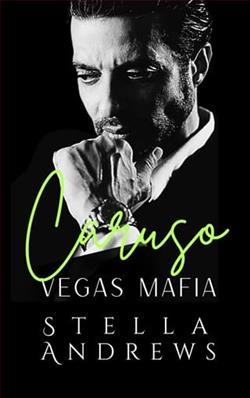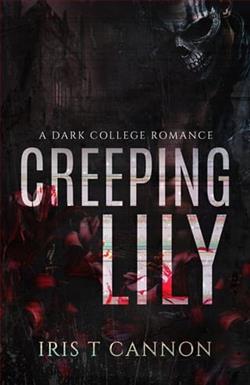Page 3 of A Court of Sugar and Spice
Quietly I open my bedroom door and slip out into the hallway.
The beauty of the house charms me, from the coffered walls and gleaming wood floors to the ornamental ceilings and hand-carved molding. It’s a lavish work of art, far different from the prosaic, plain house we had back in Lindgard. But then, Lindgard was a city of hardworking, prosaic people, intent on amassing wealth for no other reason than to possess it.
To me, wealth should be transitory. Money is simply a way to get more beauty.
I peek into several rooms on the second floor—a small library with an adjoining map room, a couple more guest rooms and bathrooms, and a large linen closet—and then I descend to the first floor. Off the main entry hall there’s a parlor, then a billiard room.
A huge painting at the back of the billiard room catches my eye. It’s a landscape, but like none I’ve ever seen—filled with oddly shaped trees, iridescent grass, and twisted figures half-hidden among leaves. The gilded frame tempts me, so I run my fingertips along it, delighting in the delicate curlicues—until my fingers encounter an odd bump, also gilded, but out of sync with the rest of the design. Puzzled, I feel around it, then press on it.
The bump gives just a little, and when I press harder, the painting pops loose and swings slightly outward.
My heartbeat speeds up as I swing the painting farther away from the wall.
Behind it is a secret door.
I should go tell Louisa what I’ve found. She’ll be peeved if I go any farther without her.
But she always gets to discover things and do things. I’m more cautious by nature, so usually by the time I’ve analyzed a thing and decided in its favor, Louisa has already plunged right in.
That difference between us always confused my father. Perhaps he thought that I, as the creative type, had no right toalsobe well-organized and prudent. But artists come in all varieties. Some are impetuous, loud, and colorful, and some like to sit quietly, analyze a beautiful thing, and soak it right into their souls. Some like to keep all their paints and brushes perfectly organized.
Some like to occasionally make discoveries without the presence of their beloved but overenthusiastic sister.
I turn the knob of the secret door, and it yields easily. If Godfather Drosselmeyer didn’t want anyone in here, surely he would have locked the door.
Cautiously I enter the dark space beyond. By the light leaking in from the billiard room, I locate a button on the wall. When I press it, several gaslamps ignite at once.
I step inside, pulling the painting and the secret door shut behind me.
I’m in a long, narrow room, a brilliant gallery filled with statuary, paintings, and artifacts.
A closer look at the artifacts beneath the bell jars and glass cases reveals items I can’t quite identify—a cap dyed several shades of brown, a jeweled claw, a set of pearly white fangs on a gold chain, and a dagger that seems to glow faintly silver where it disappears into its sheath. Pinned to the wall there’s a pair of dragonfly wings, much too large to have come from any dragonfly I’ve ever seen. Above them is a pair of antlers, sparkling white.
In a glass cabinet in one corner there’s a tall golden staff with an amber orb at the top. And in that orb is an eyeball. I could swear when I glance away, then look back at it, the eyeball is pointing in a different direction.
The statues are strange, too. They seem to be carved of soapstone in various shades, from pale reddish-brown, to light jade, to creamy white, to soft gray. They resemble humans, but their bodies are longer, the proportions slightly different. Some of the figures’ ears are like a fawn’s or a calf’s, while others are sleek and pointed. Their faces, too, are unexpected. Some run the normal human gamut of broad, narrow, rounded, symmetrical or lopsided. Others have distinctly bestial qualities—wolfish muzzles, bovine snouts, shrewd fox faces, insectoid jaws with mouthparts.
Did Godfather Drosselmeyer make these? I never heard Papa mention him being a sculptor.
A thump overhead startles me. Skittishly I race back to the hidden door, slip out, and push the painting back into its spot.
When I turn around, a wooden face is smiling at me with hideous cheer.
I stifle a scream with my palm.
The figure before me is life-sized—a wooden puppet dressed in a maid’s black uniform, with a stiff wooden skirt and jointed wooden legs. Her wooden features have been carved and polished with such care they seem lifelike.
As I stare, thin wooden eyelids close over her eyes, then open again. Her painted mouth curves in a perpetual toothy smile, and she has glossy brown carved hair, with a round bun at the back of her neck. She’s holding a feather duster.
With jerky steps, she minces past me and brushes the duster along the edges of the ornate painting. Then, with a crooked head tilt and that painted smile, she moves awkwardly sideways and begins dusting a bookshelf.
“Gracious,” I breathe, backing away.
“You’ve never seen an automaton?” The voice from the doorway of the billiard room startles me. I jump hard, and Godfather Drosselmeyer chuckles.
“Forgive me.” I press a hand to my chest. “No, I’ve never seen such a thing. How does it function?”
“Clockwork,” he says. “You’ve seen the figures in music boxes or cuckoo clocks, how they move and repeat certain patterns?”















